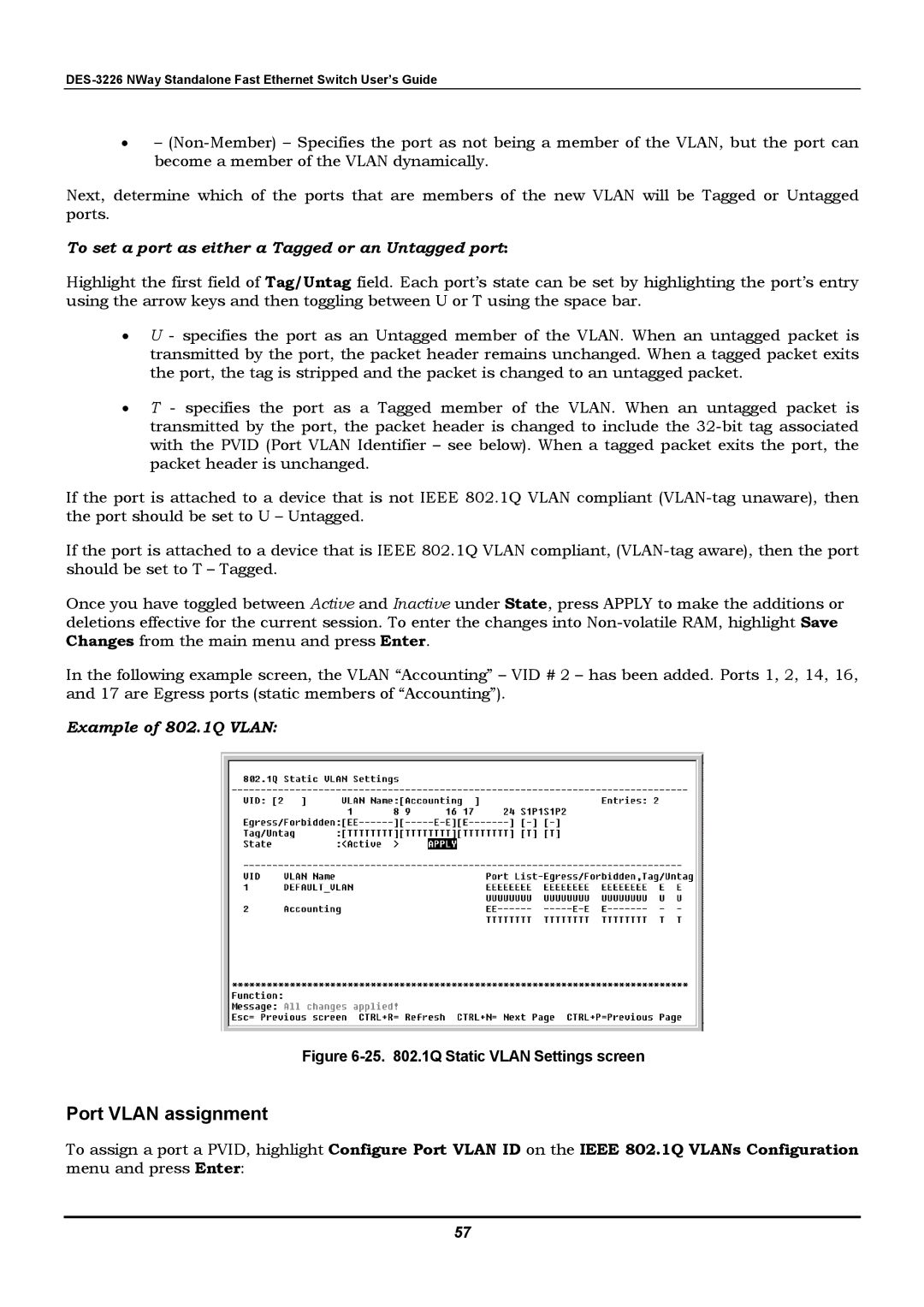
DES-3226 NWay Standalone Fast Ethernet Switch User’s Guide
•–
Next, determine which of the ports that are members of the new VLAN will be Tagged or Untagged ports.
To set a port as either a Tagged or an Untagged port:
Highlight the first field of Tag/Untag field. Each port’s state can be set by highlighting the port’s entry using the arrow keys and then toggling between U or T using the space bar.
•U - specifies the port as an Untagged member of the VLAN. When an untagged packet is transmitted by the port, the packet header remains unchanged. When a tagged packet exits the port, the tag is stripped and the packet is changed to an untagged packet.
•T - specifies the port as a Tagged member of the VLAN. When an untagged packet is transmitted by the port, the packet header is changed to include the
If the port is attached to a device that is not IEEE 802.1Q VLAN compliant
If the port is attached to a device that is IEEE 802.1Q VLAN compliant,
Once you have toggled between Active and Inactive under State, press APPLY to make the additions or deletions effective for the current session. To enter the changes into
In the following example screen, the VLAN “Accounting” – VID # 2 – has been added. Ports 1, 2, 14, 16, and 17 are Egress ports (static members of “Accounting”).
Example of 802.1Q VLAN:
Figure 6-25. 802.1Q Static VLAN Settings screen
Port VLAN assignment
To assign a port a PVID, highlight Configure Port VLAN ID on the IEEE 802.1Q VLANs Configuration menu and press Enter:
57
